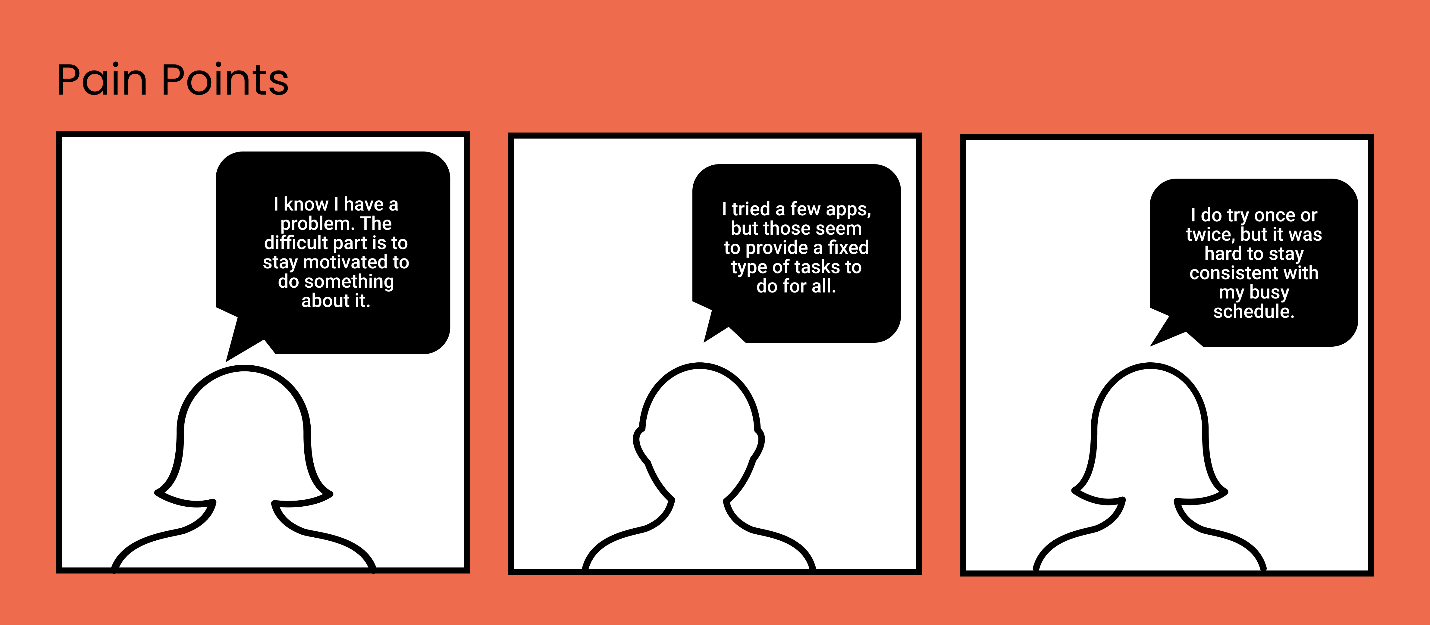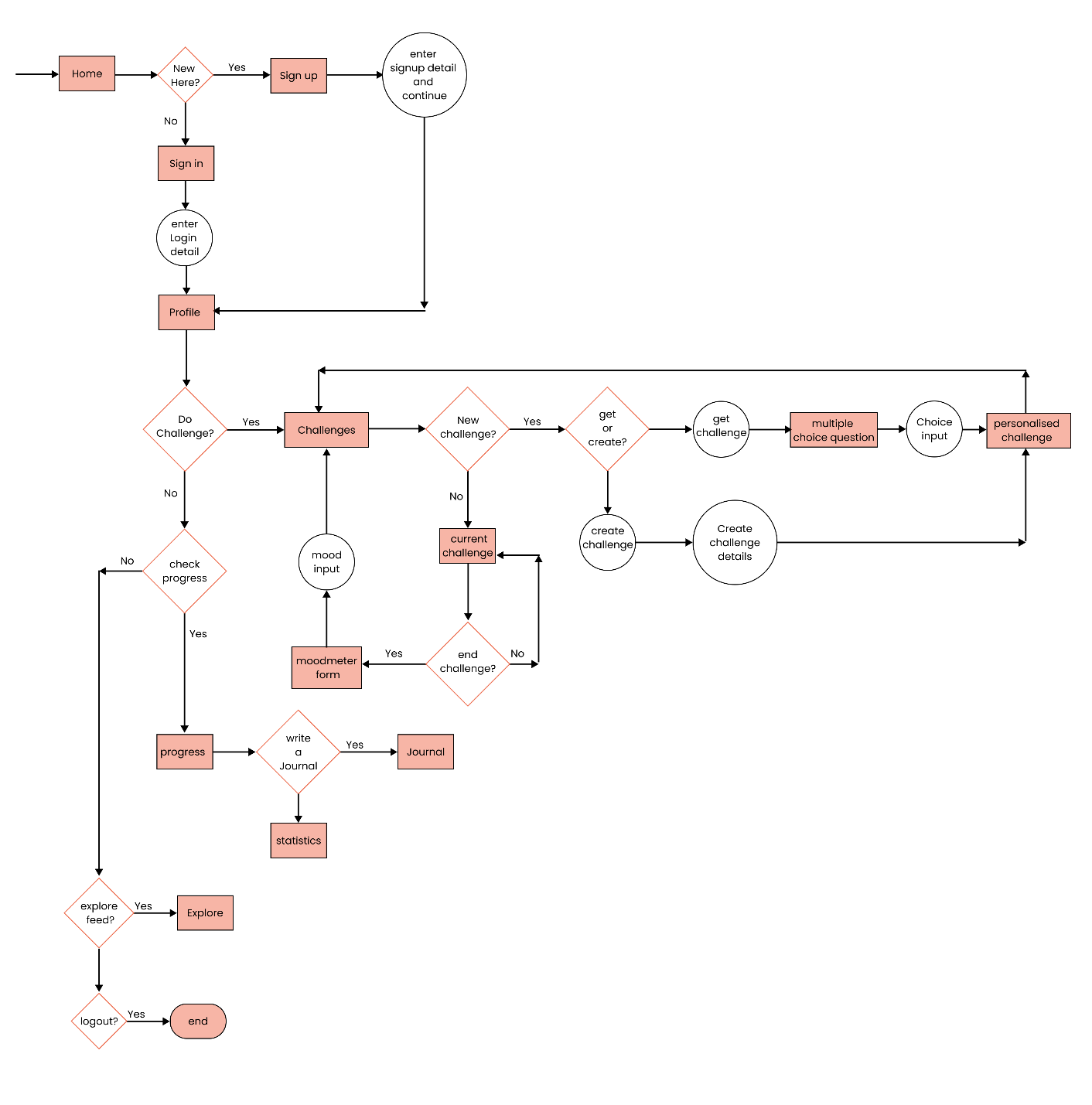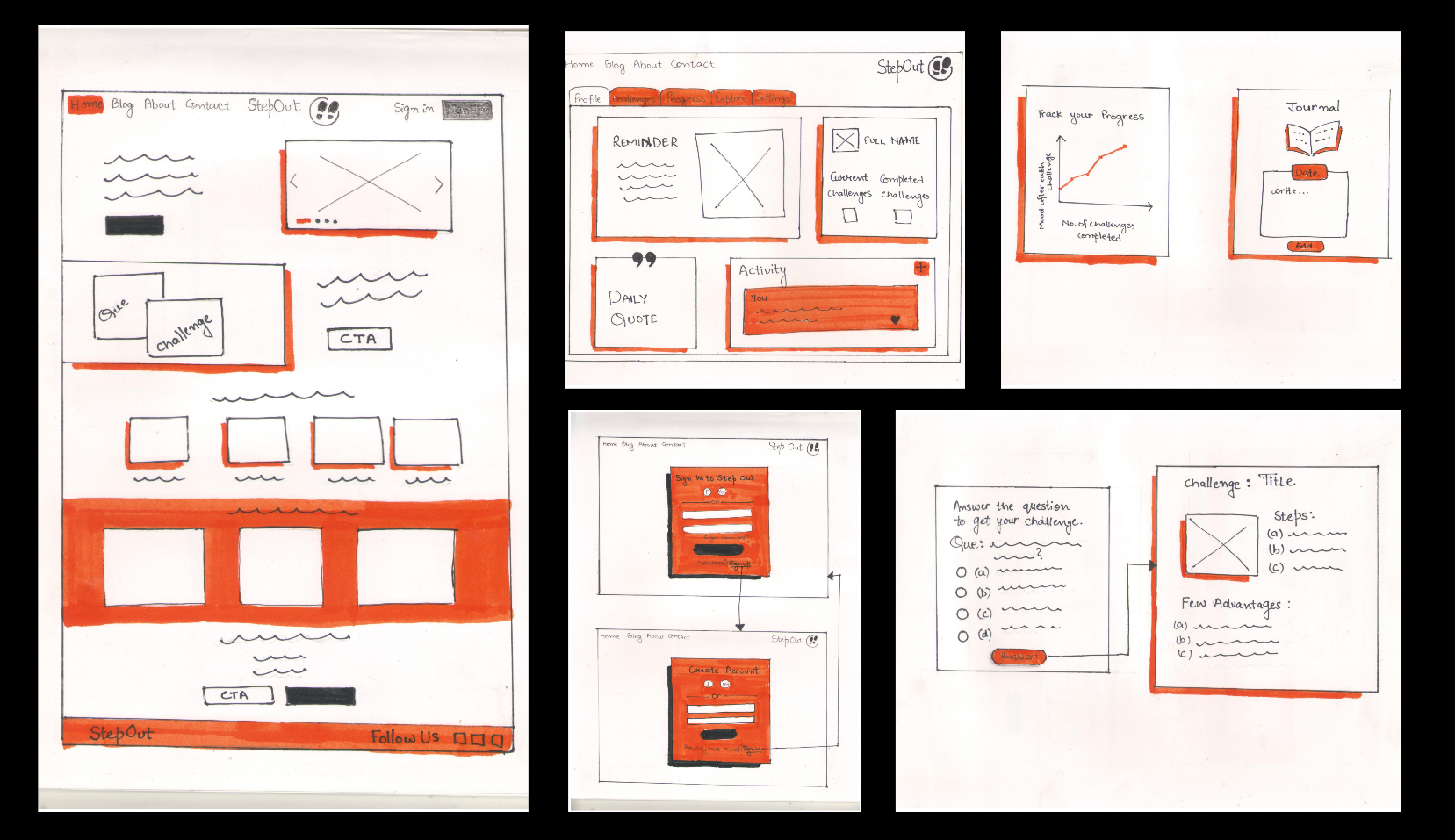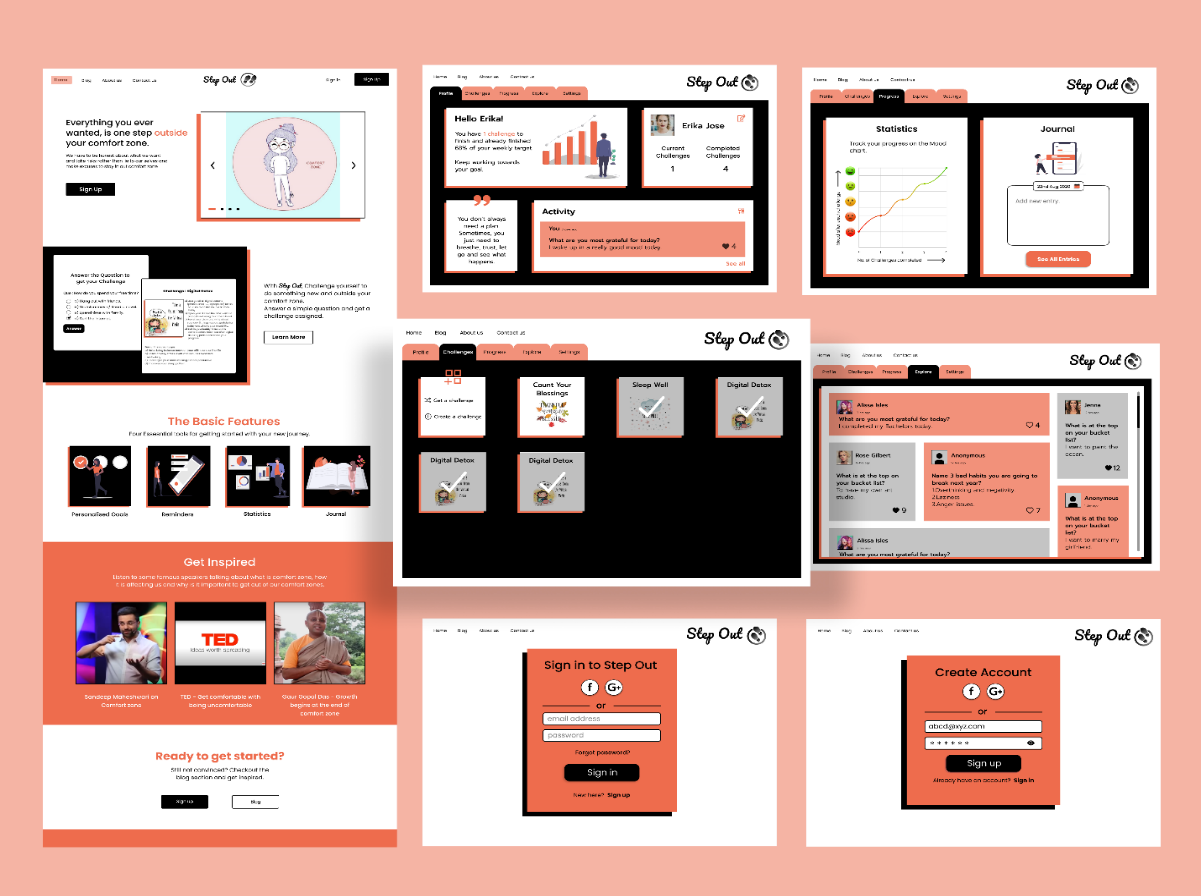
Step Out
The StepOut project is a joint effort of me and my team mate Hitesh Kumar for our Major Project in Final year of our BTECH.
I am the UX/UI designer of this project responsible for the conduction of user research, recognition of user pain points, ideation of solutions and build the visual designs including wireframes and final prototype.
My partner (Hitesh) executed the front-end and the back-end development of our project.
Problem Statement :– Most people have gotten too comfortable in their routines and have no inspiration to try anything spontaneous or out of their comfort zones. Also some may even have developed a fear of it too.
Solution :– STEPOUT aims to be the slight push one needs to get out of their bubble of comfort zone in an interesting and quirky way. It provides user with challenges that will slowly help them to get over their excuses and tryout new things.
Target Users :– 12 to 30 yrs – the teenagers and young adults, where we are building the values we base our lives on.
Interview Questions –
- • What is your daily routine?
- • What are your favorite activities in free time?
- • How did you spend most of the COVID-19 locked down period?
- • How would you describe your stress level?
- • Did you do anything new?
- • If no, why not?
- • What are the top excuses you use to convince yourself out of doing something/anything?
- • What makes you most happy?
- • What are your short term and long term goals?
- • What are you doing to achieve them?
- • Have you tried any mobile/web applications to challenge yourself to do new things?
- • Would you like to try one?
Observations -
- - Comfort zone is not just a physical parameter and more of a mental paramete.
- - Users tend to fear the consequences of their actions.
- - The Challenge is to help them change their state of mind.
Pain Points :-

Ideas –
- • Use of multiple choice questions to provide users with challenges which fit them the best.
- • To help the user get and stay motivated include videos and a blog section with recent articles on comfort zone.
- • Provide reminders so that the users know where they are at in a challenge.
- • Provide statistics, so that the user can track their progress and see the benefits in action.
- • Provide a journal system, which helps the user record their state of mind, emotional status or any important happening of the day.
- • An option for the user to share their journey with other users and also get inspired by the journey of others.
User flows –

- At first our approach was to let the user fill out a questionnaire just after the Sign Up which will be the basis for the category that the user will get the challenges from.
- But later, we realized that listing a fixed number of categories to fit a user in on basis of their comfort zones and using a limited number of questions to connect the user to those categories can be constrictive and challenging on a long term basis.
- It would also require an unnecessary option for the user to change their answers to those questions at later stage in time.
Second Approach
Later we tried a new approach where a new challenge was linked with a single question based upon the answer of the user. This solution turned out to be more effective as it covered the time dynamics for a user’s state of mind. Also, this made it easier to insert new challenges in the database by accompanying them with an appropriate question.

Style guide –

Wireframes -

Final design -
Everybody gets keen towards exciting new things. That’s why we unfold challenges one by one to keep the user excited + motivated for suspense, starting from basic & easy to steadily making the user STEPOUT of their comfort zone before they know it.

My inspiration –
COVID-19 popped my bubble and I realized that even when I had the world’s time, I did not try anything out of my comfort zone. I felt the urge to do something to help others like me, handicapped by their laziness and missing out on the opportunities in life. Getting serious about my career and starting with project was my first step out of my comfort zone.
What I learned –
- • I learned how working in a team is different than working alone.
- • How a designer has to get involved with other actors in the project (such as the developer).
- • How important it is to separate the user in us from the designer.